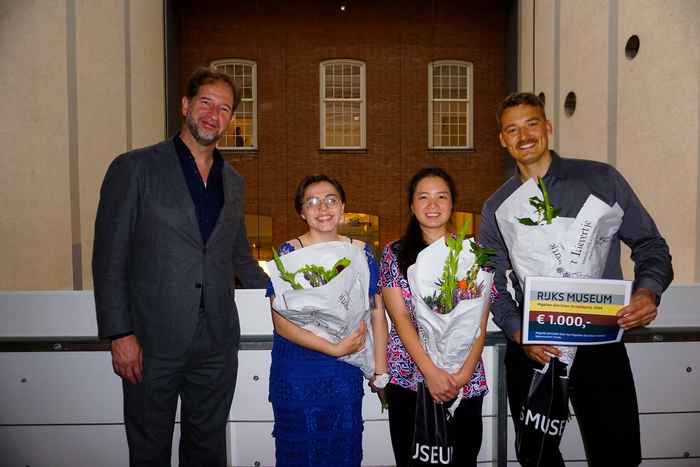Michiel Vermaat wins Rijksmuseum Migelien Gerritzen thesis prize 2024
7 November 2024

The jury unanimously chose Vermaat because of the innovative application of zinc oxide consolidants, the good design of the research and its potential for a wide range of materials and objects. The other two nominees for the Migelien Gerritzen prize were Emily Benton with a study on the degradation of red lead in wood block prints, and Vanessa Kirana with a study on the architectural finishes of shophouses in Singapore.
Michiel Vermaat focused on the use of X-ray imaging, X-ray CT and thermal neutron CT to visualise the effectiveness of consolidants in wood damaged by wood borer. Wood samples were impregnated with zinc oxide solutions. The scanning techniques showed, with varying effectiveness, the contrast of the distribution of nanoparticles in the wood. Finally, optimal contrast was achieved by applying a so-called Blender imaging technique, which made small amounts of zinc oxide particles visible within the wood matrix. A first step in the challenge of understanding the effectiveness of impregnation of porous materials and damaged objects.
Rijksmuseum-Migelien Gerritzen thesis awards
Since 2013, the Rijksmuseum awards the Migelien Gerritzen Thesis Award to a Master’s student in Conservation and Restoration at the University of Amsterdam. The award consists of a cheque worth € 1.000, half of which is awarded to the recipient directly, while the other half can be redeemed after publication of the research in a professional journal for research in conservation and restoration. The award was initiated by the Migelien Gerritzen Fund/Rijksmuseum Fund. This fund was established in rembrance of Migelien Gerritzen from the generous bequest donated after her death which supports educational projects in conservation, restoration and technical art history.
Conservation and restoration at the UvA
The University of Amsterdam is the only program in the Netherlands that offers education in conservation-restoration according to European standards. It is an interdisciplinary program aimed at students with a passion for cultural heritage, and a wish to combine theory and practice. The education trajectory starts with a two-year Master’s in Conservation and Restoration of Cultural Heritage which consists of nine conservation specialisations as well as a track in Technical Art History. After successful completion of the Master’s program, conservation students complete their education as a conservator with the two-year Advanced Professional Program.